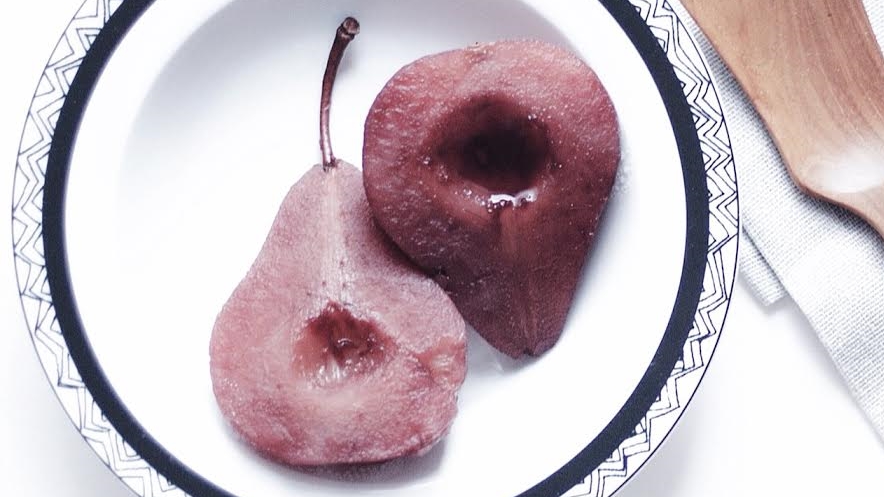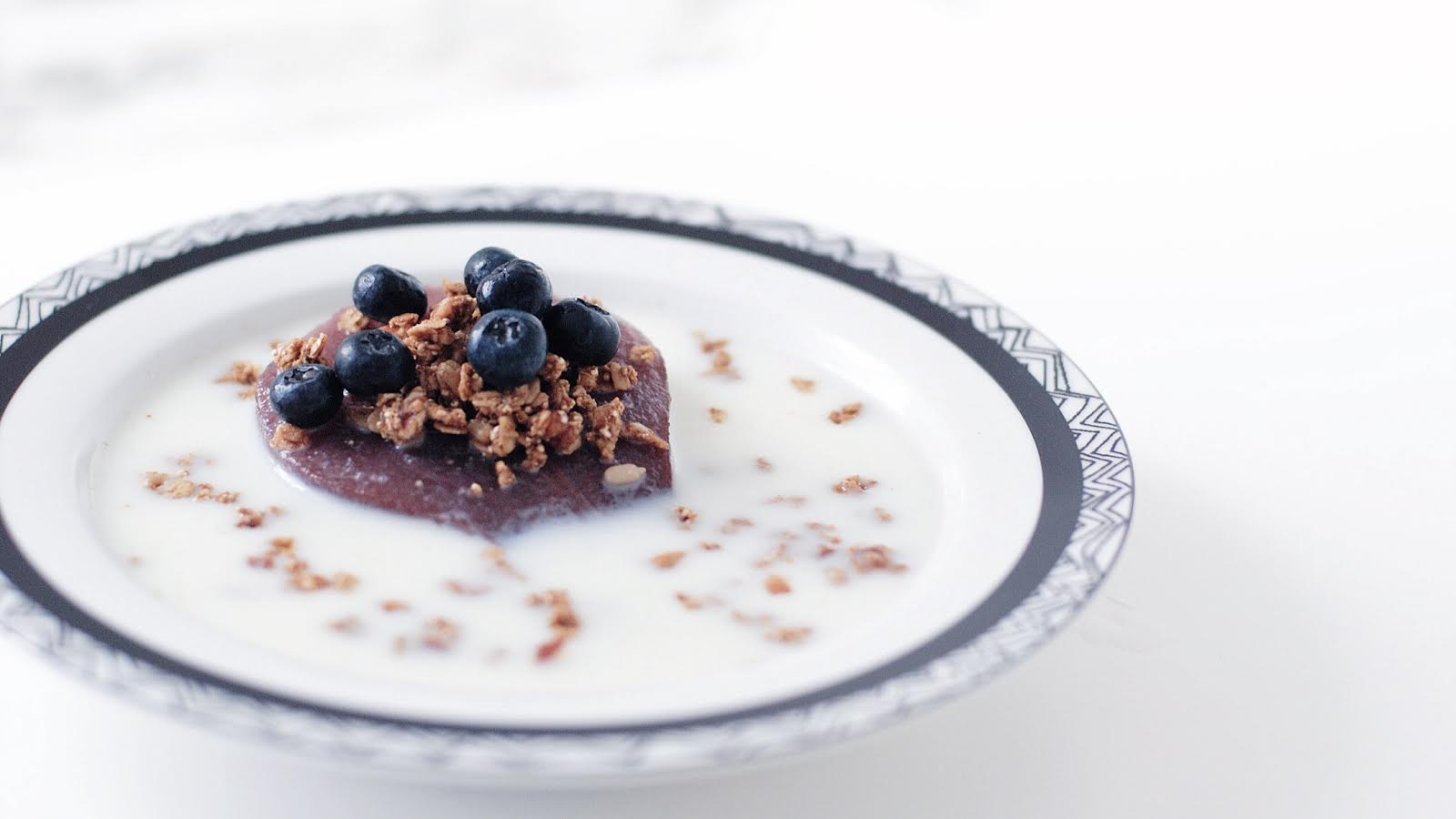Poached Pears With Muesli, Lavender & Almond Milk
Right now everyone is in pumpkin, squash and gourd mode, but let's not forget about one of fall's most amazing offerings: aromatic, sweet and juicy pears. Bosc, Bartlett, Comice, Seckel, Anjou–take your pick! In addition to pies, sauces and salads, pears are also a great way to avoid what I call Green Juice Boredom aka GJB, which is a syndrome caused by using the same ingredients for the ubiquitous morning elixir typically made with green apples.
Here's a quick guide to the most popular varieties:
- Anjou – Sweet with a hint of citrus, these are the second most recognizable and abundant pears in the United States. There are Green Anjous and Red Anjous.
- Bartlett – Identified by a green skin that ripens to yellow with a slight blush of red, this is most common pear. It's sweet and very juicy, and is also used for canned pears.
- Bosc – Perfect for cooking and baking, these elegant winter pears with their elongated neck have a cinnamon brown matte skin covering a white, honey-sweet flesh.
- Comice – Considered one of the best eating pears due to it's sweet smooth flesh.
- Seckel – The smallest of the most common varieties with a spicy, grainy flesh making them suitable for cooking.
There's hardly a science to picking the perfect pear. In fact, you can select a beautifully unblemished pear that turns out to be grainy and tasteless to the palate. This is because the skin of the pear doesn't necessarily indicate how it's been harvested, handled and stored, which is why I recommend buying pears from you local greenmarket, where the chances are greater for freshly picked and delicately handled fruit.
So the only two tips I have for picking pears are:
- Avoid pears with deep bruises and unappealing blemishes.
- Select unripe, hard pears and leave them on your counter or in a bowl to ripen for a couple of days. Unlike most other fruits, it's best to pick pears unripe and let them ripen off the tree.
Incredibly versatile, pears can be used in both sweet and savory dishes and prepared using a variety of different cooking methods. Today we're going to explore one of my favorite preparations, which is wonderful for both hard, unripe pears, as well as soft, juicy ripe ones: poaching.
Poached Pears With Muesli, Lavender & Almond Milk
Ingredients
2 cups dry red wine (for a non-alcoholic version, use water with orange juice, ginger and vanilla beans)
1/4 cup agave
1 orange, juiced
1 tbs honey
1/2 cinnamon stick
2 tablespoons dried lavender
4 firm, ripe pears (any variety, I used Bosc)
Directions
- In a 4-quart saucepan, combine the wine, agave, orange juice, cinnamon stick and lavender. Bring to a boil, reduce heat and simmer for 5 minutes.
- While the mixture is simmering, peel the pears, leaving the stem intact. You can cut them in half or use them whole depending on your final presentation.
- Gently place pears in the liquid, cover, and simmer for 15 to 20 minutes, turning every 5 minutes to ensure even color, and until pears are cooked but still firm.
- Remove the saucepan from the heat, uncover and cool the pears while still in the pan. Once cool, cover and chill in refrigerator at least 3 hours or up to 24 hours. Gently remove pears from liquid and bring them to room temperature.
- In a bowl, add a halved pear, top with muesli or granola, sprinkle with pinch of dried lavender and top with almond milk and drizzle with honey.
Note: You can use these poached pears for many different recipe, and can create a syrup from the wine mixture. To do this, after Step 4, reduce liquid by about half over a medium-high flame for 15 minutes, until liquid is slightly. Remove from the heat and let the liquid come to room temperature. Drizzle each pear with 2 tablespoons syrup and serve.






